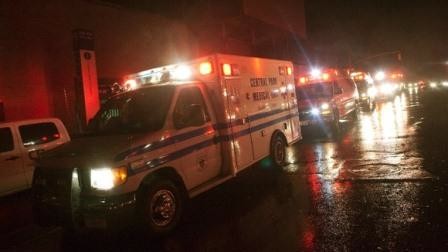By Bryan Mashian, Esq., Contributing Columnist
When negotiating a lease in a multi-tenant project, such as a shopping center, office building or industrial park, the parties often heavily negotiate the provisions relating to expenses of maintaining the common areas (often referred to as “CAM” or “triple net”). The concept is fairly simple — landlord recoups expenses of maintaining the areas used in common by all the tenants. But the issues can be complex. For example, the amount of the tenant’s “fair” share of CAM expenses largely depends on whether you are the one paying or getting paid CAMs. Also, defining the pool of expenses to be reimbursed often comes down to the respective bargaining leverage of the parties.
What are Common Areas
Common areas typically include parking areas, sidewalks, hallways, lobbies, public restrooms and other areas intended for common use by tenants, their visitors, and the public. Most leases allow the landlord to designate and change the “common areas” so the landlord has flexibility for development and remodeling. The tenant, on the other hand, expects the project to look like the site plan or as it then exists, and therefore may have genuine concerns about changes that would negatively affect its business. The parties can resolve these types of issues by specifying the portions of the project that can be built upon in the future (“Permitted Building Areas”), or agreeing on parts where no buildings may be built (“No-Build Areas”). Also, similar restrictions can be agreed upon regarding curb cuts and critical points of ingress and egress, and other aspects of the project which are crucial.
The Tenant’s Share
The tenant’s share is the tenant’s relative percentage of the project, which is often a fraction, the numerator of which is the size of the tenant’s space and the denominator of which is the size of the overall project. But, this share varies greatly depending upon the type of property being leased. For example, in a regional mall, it is customary to exclude anchor tenants occupying more than a specified square footage from the denominator (or the overall size of the center). In power center or neighborhood center leasing, it is more customary to base the tenant’s share more strictly on the ratio of the tenant’s floor area to the floor area of other buildings in the center. In a ground lease, if the ground leased premises include not only the tenant’s building pad but also an equitable share of the common areas, the tenant’s share is generally calculated based on the ratio of the land area of the leased premises to the total land area of the center.
Everything but the Kitchen Sink
The landlord oriented leases typically have a very expansive and extensive list of CAM expenses. The burden then shifts to the tenant to whittle down these items. Often, tenants have their own extensive list of exclusions from CAM expenses, such as ground lease rent, debt service payments, costs of casualty repair, tenant improvements, brokers’ commissions and attorneys’ fees for new leases or renewals, etc. Although most of the items on a typical list would not be included in any event, the parties must carefully review the list of inclusions and exclusions to ensure they do not unintentionally agree to an item being in or out of CAM expenses.
“Caps”
To avoid spending a lot of time, effort and money on negotiating CAM expenses, a tenant will often request a “cap” on its obligation for payment of CAM expenses. If such a cap is agreed to by the landlord, often the landlord will limit it only to “controllable” items of CAM expenses, which typically exclude real property taxes, insurance costs, security costs and utility costs.
“Gross” Leases
Similarly, to simplify the lease negotiation process, some landlords have elected to structure their leases as “gross” leases so that the tenant pays a set rent that includes an assumed amount for CAM expenses. This lease structure avoids the parties spending a lot of time negotiating the CAM provision, and the landlord billing the tenant for CAM expenses every month. In these leases, if the CAM expenses decrease below the amount used as CAMs, the tenant does not receive any reduction in its rent.
Capital Expenditures
Limitations on inclusion of capital expenditures in CAM expenses is often the subject of complex lease negotiations. The landlord sees itself as the steward of the common areas and any related costs should be passed on to the tenants. The tenant believes the landlord’s capital expenditures are long term investments that are reflected in the base rental rate. When resolving this issue, the parties often agree that some items are wholly excluded, while others are included, but are amortized over their expected useful lives, and only annual amortization is included in CAM expenses in each year of such amortization period. The parties will sometimes agree to add interest at some specified rate to compensate the landlord for time value of money.
Tenant Audit Rights
A tenant should request the right to audit CAM expenses to ensure accuracy in its billings. The landlord, however, has legitimate concerns to avoid unreasonable interference with its business operations. The landlord will typically require that any such audit be made upon a certain minimum amount of prior notice, at the landlord’s offices, not more often than once per year, and within a specified time frame. In order to avoid “nuisance” auditing, landlords also typically require that any such audit be performed only by a reputable national or regional CPA firm which is not being compensated on a contingency fee basis. The landlord will usually request that any information obtained from an audit be kept confidential by the tenant. The tenant will also request that the landlord reimburse the reasonable costs of the audit if the audit shows an overstatement of annual CAM expenses.
Discover more from Helping NYC & Long Island Commercial Tenants, Owners, and Developers
Subscribe to get the latest posts sent to your email.






Common areas typically include parking areas, sidewalks, hallways, lobbies, public restrooms and other areas intended for common use by tenants, their visitors, and the public good..